This morning after a light breakfast, we set out to do some walking / hiking on the western edge of Berlin, where there is a big lake, the Wannsee, and some smaller ones and separating it from the more urban areas, a big forest area, the Grunewald. We took the subway and elevated (S-Bahn) for about 45 minutes total to get to a stop from which it was a relatively short walk to the lakeshore of the Wannsee. People who rely on public transportation rather than on their cars (i.e. many Berliners) take this stop to go to the big for-pay beach area of the lake (Wannseestrandbad), and walk for about 15 minutes through an area that is part forest and part little cafés and food trucks that tempt you before you ever get into your swimsuit. We took the hiking path that starts at that point, and since it was only 9 am we were pretty much the only ones on it. It offered a view of the lake a few times, but led mostly through the woods; we took it for about 2 miles, to a small island called Schwanenwerder, with about 50 homes on it, and an interesting history. It was an uninhabited, useless piece of land until a wealthy magnate bought it in the late 19th century, built it up, added some park land and a ruin to make it romantic, and sold lots to other wealthy people who built fancy resort villas on it. But because the majority of them were Jewish, the land was then partly sold by some families who managed to emigrate, and partly expropriated by the Nazis. After the war, some of the villas got new owners (including some churches and NGOs who used them for meetings and retreats), some were torn down and replaced by super fancy, gated modern lakeside homes, and others were tangled up in reparation lawsuits and fell into ruin. So there are now both fake and real ruins on the island, but VERY few spots where you can see the lake at all, because it’s basically one big cul-de-sac with lake-front homes all around it.
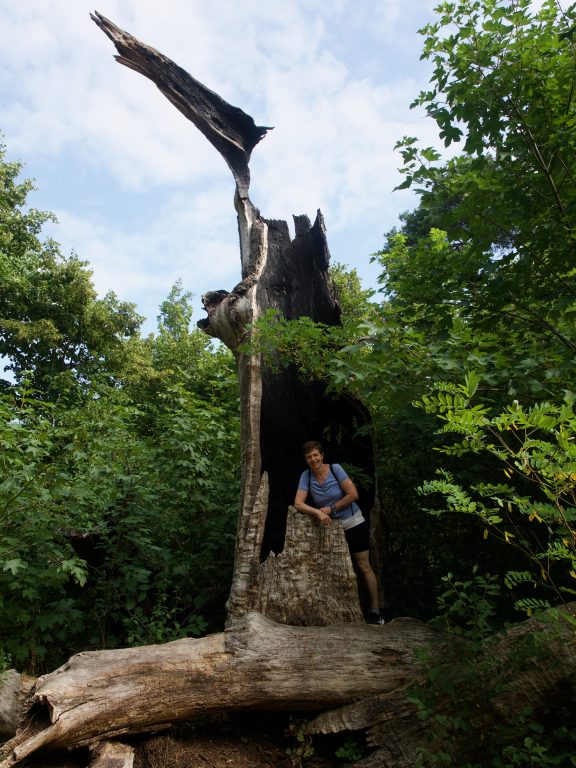
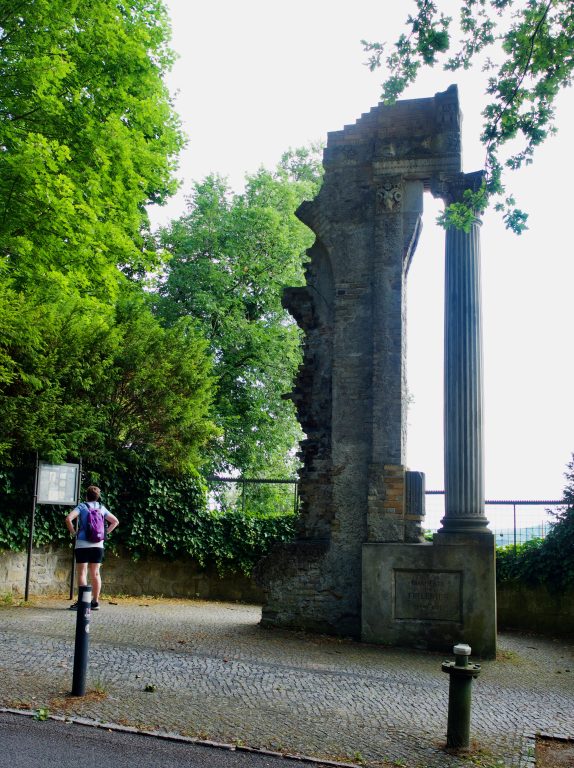
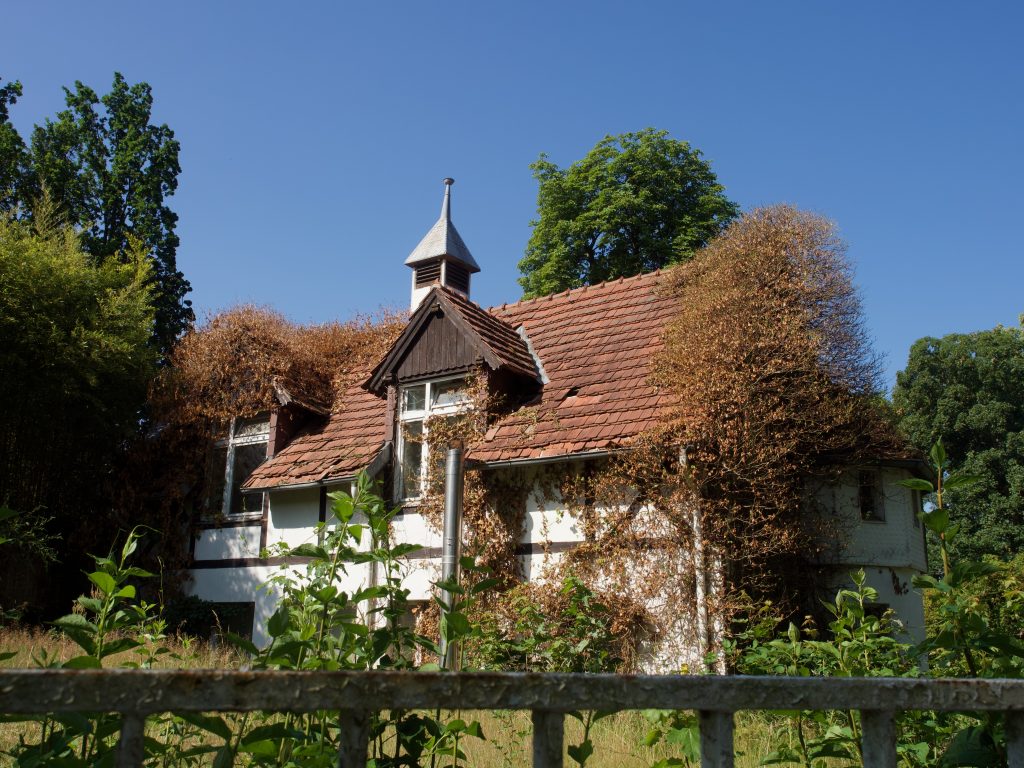
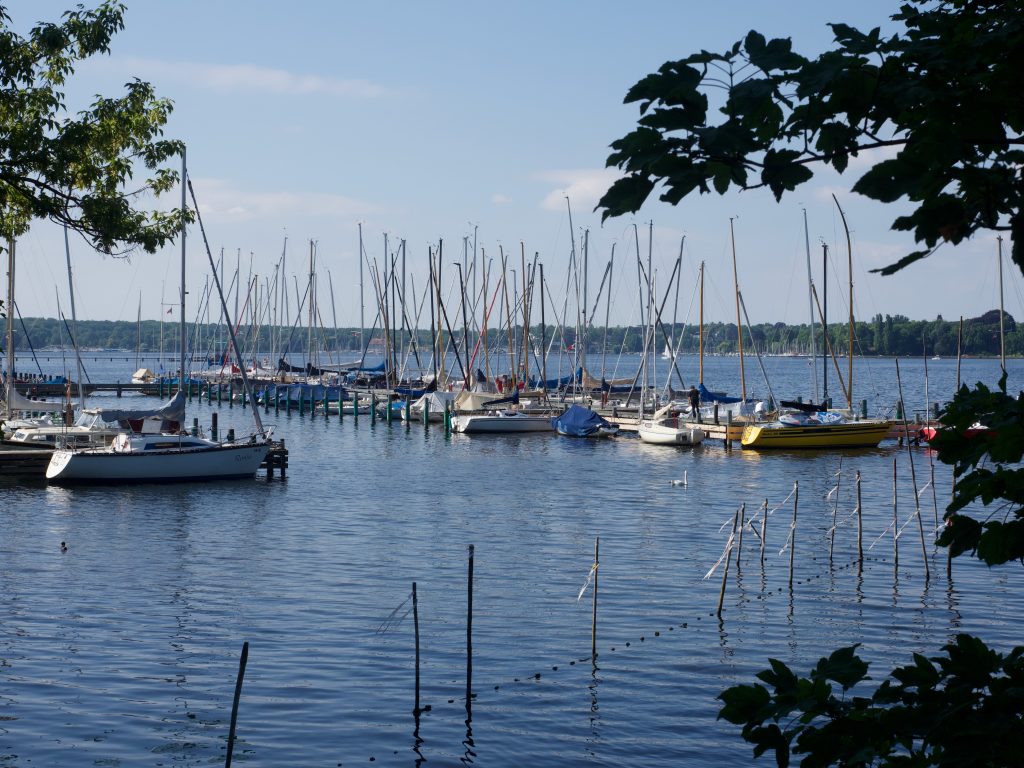
After our excursion to the Wannsee, we returned to the S-Bahn and went back toward town by one stop, where the main hiking road into the Grunewald begins (and by road, I mean road–it is for pedestrians, but for the first mile it is about two car widths in breadth). Our goal was to walk to the Teufelsberg (a recommendation from Andrea and Peter). This is another hill created by piles and piles of rubble after the World War II bombings, but quite a bit higher (they estimate that about 1/3 of the rubble of the homes of Berlin, many many millions of cubic feet, is underneath the soil and the trees and shrubs that began to be planted in the 1950s. This particular rubble hill (there is another one nearby, the Drachenberg) stands out, though. First of all, it buried an incomplete military-technical campus that Hitler wanted to add to Berlin’s technical university before all building stopped during the war. Secondly, because in the postwar era, the Americans, in cooperation with the British forces, began to build a giant radar spying station there to listen in on stuff going on behind the Iron Curtain. And thirdly, when all of that came to an end in the 1990s, the Americans gave the whole mess (minus the technical equipment) to Berlin, and it became a controversial who-should-develop-it issue. The area was neglected and covered with graffiti until an organization took it over and made it a tourist attraction. We were a bit taken aback at having to pay 12 Euro / 10 Euro reduced to get in, because all you do is wander around, admire the now professionally enhanced street art around the buildings and up the main former radar tower (much of which is amazing, but I do not think that the ticket price is shared with the artists!). The view of the whole city from the tallest accessible building is pretty stunning, and the decay of everything is fascinating to look at.
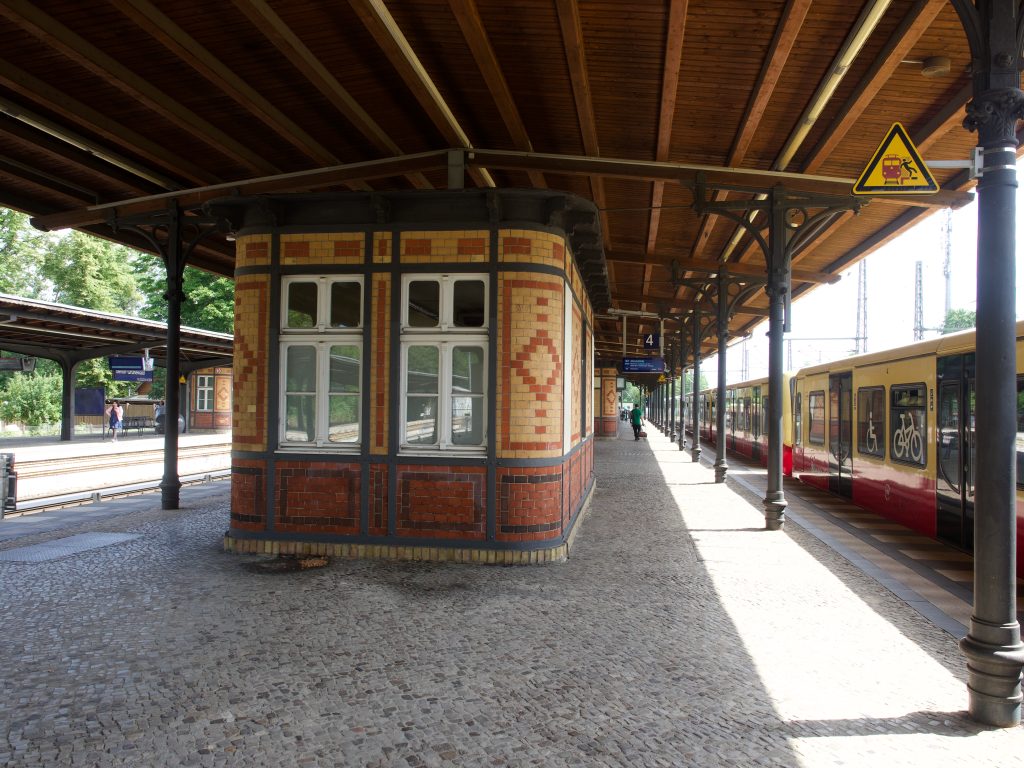
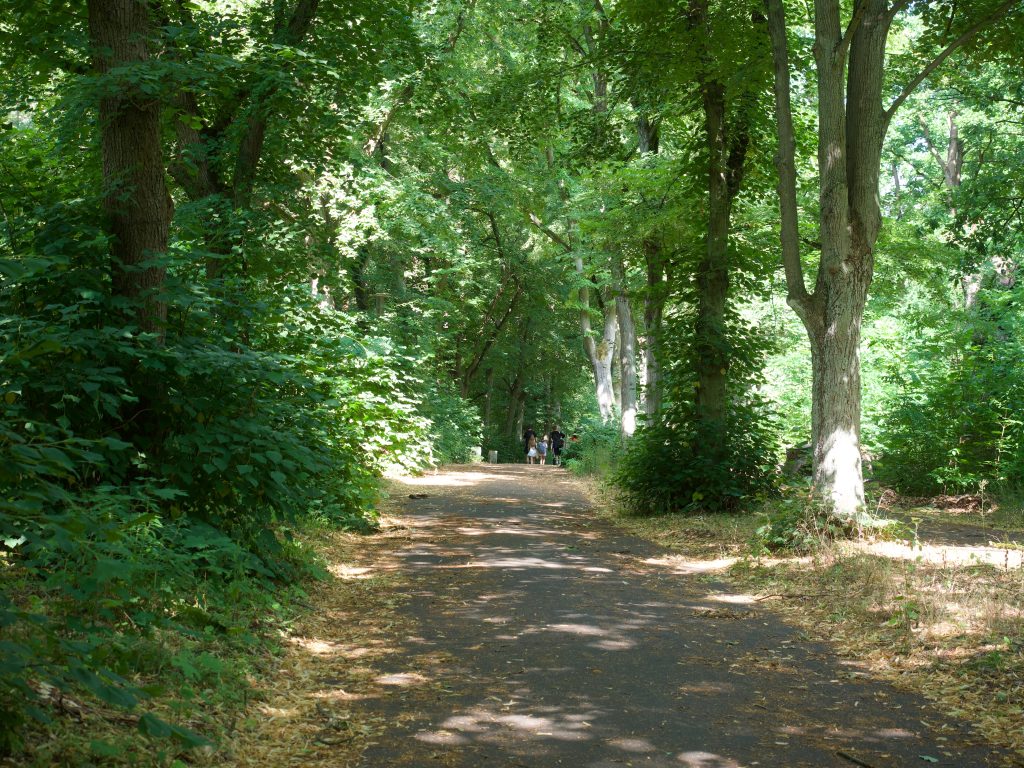
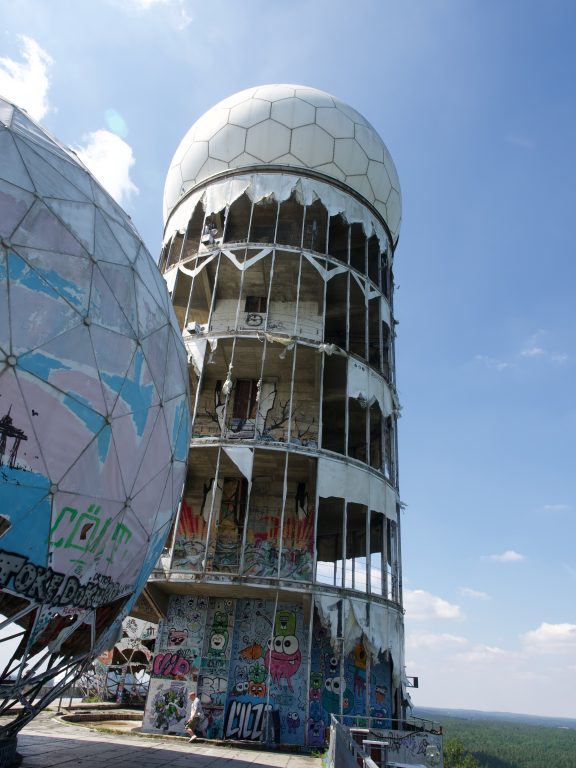
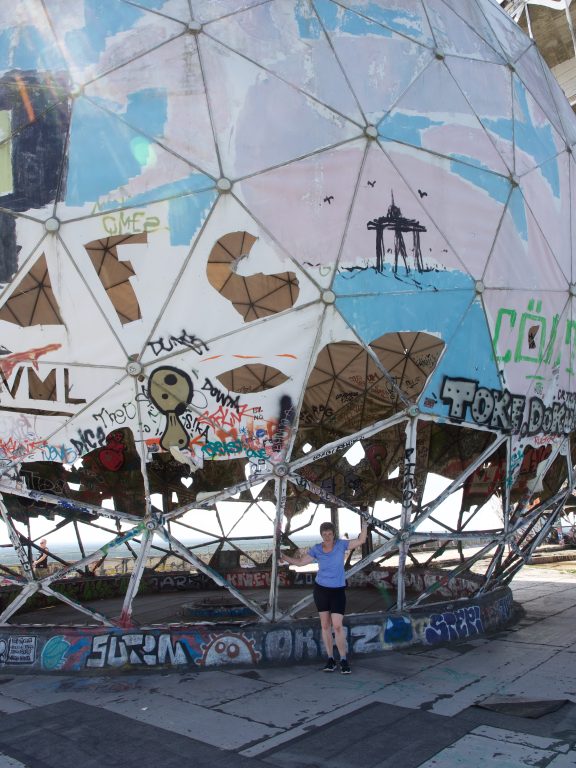
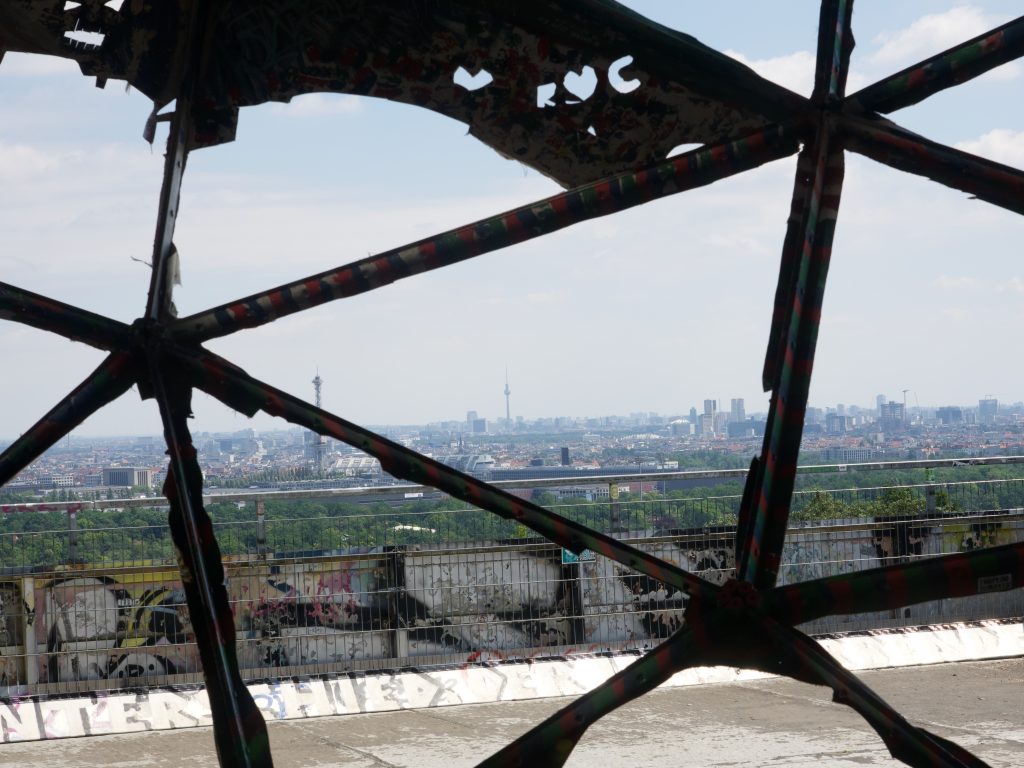
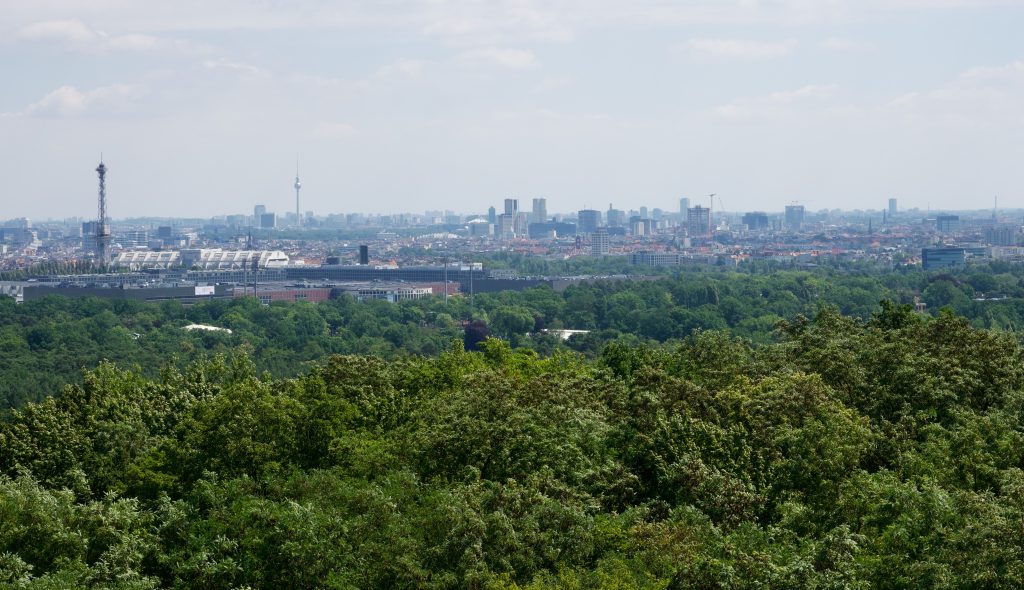
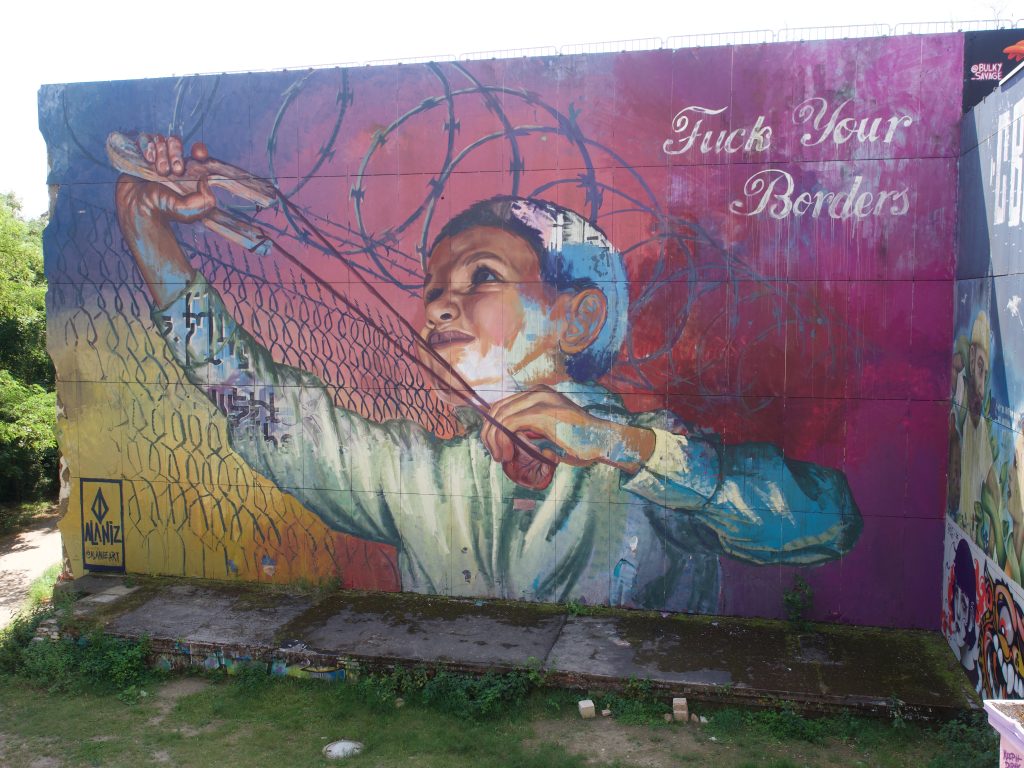
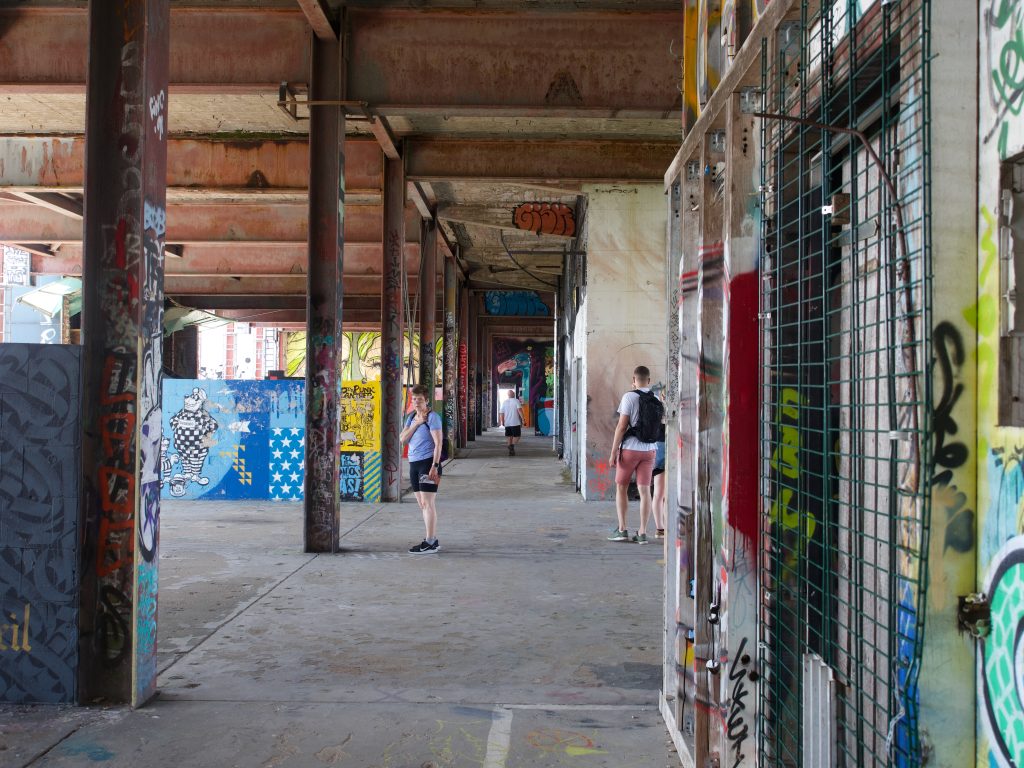
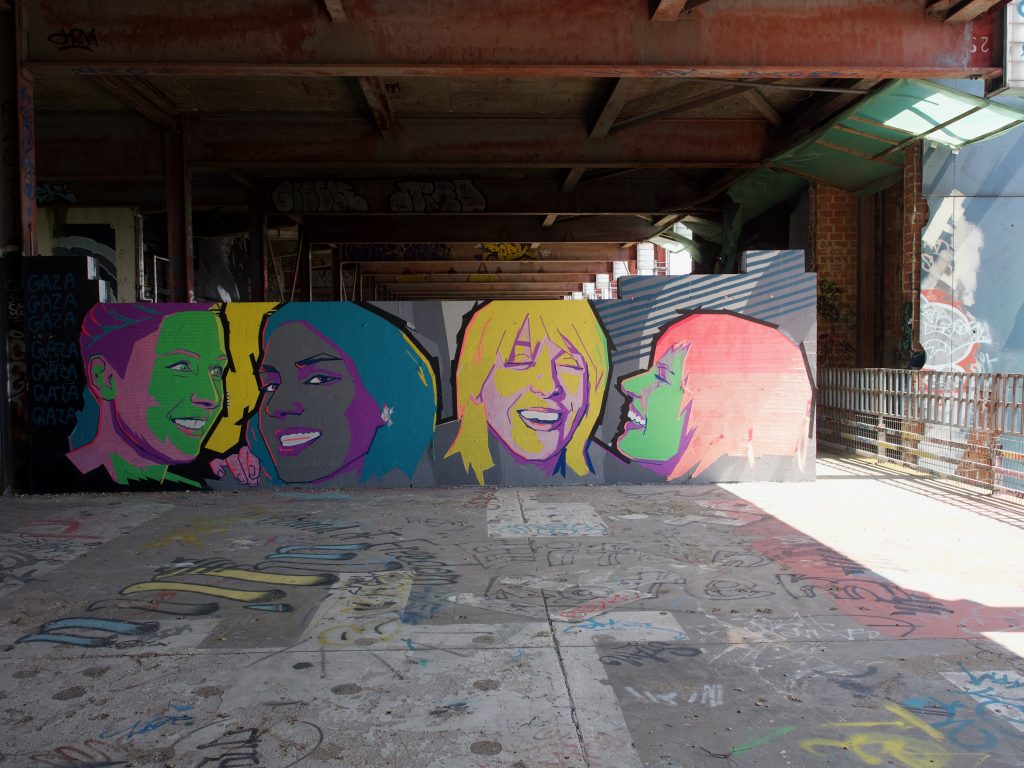
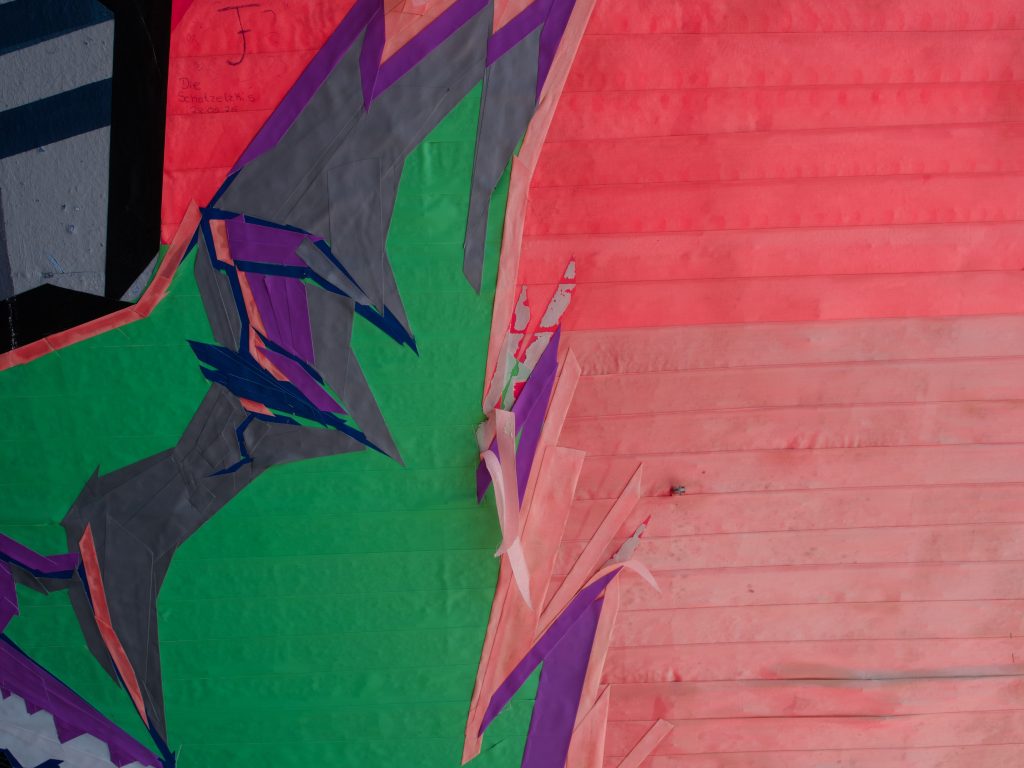
But since we then hiked to the next rubble hill (Drachenberg), which just has a flat top and an equally cool view of Berlin, we are not quite sure why so many people make their way up there by car, bike and (less frequently) on foot. On the way down from the Drachenberg, we picked up a couple of shards–especially on the way down where more water runoff lays bare some of the debris, as a hiker you are always aware that the ENTIRE mountain beneath you are the brick, mortar, concrete, and broken household goods of tens of thousands of homes destroyed during World War II.

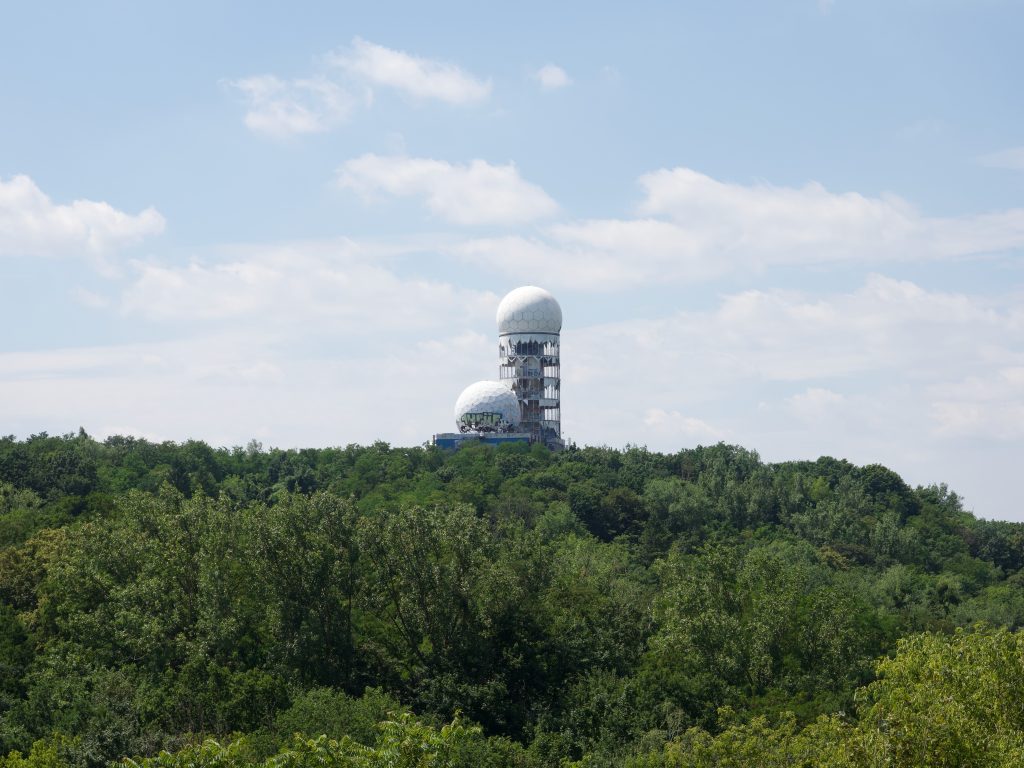
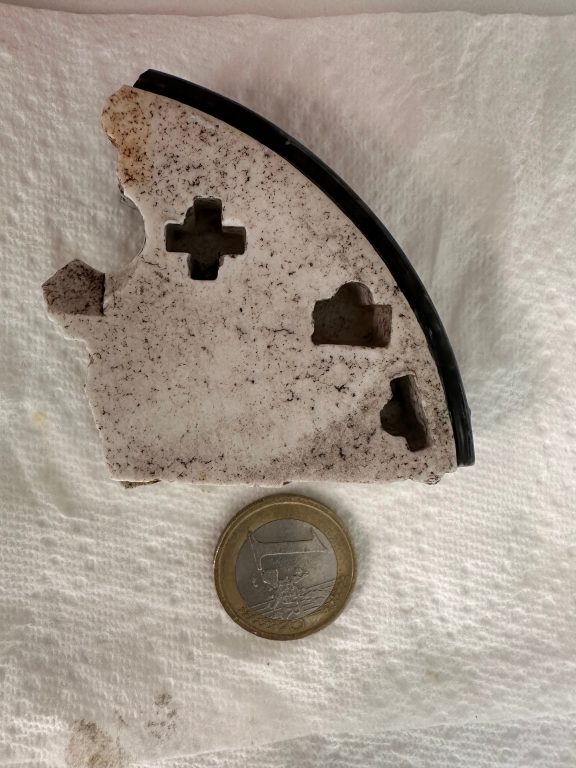
After our morning hike (with some breaks to eat our picnic food) we stopped at an outdoor café near the S-Bahn station Heerstrasse and had some cake and ice cream. It had gotten quite hot, but the chairs and tables were in the shade and it was a lovely little rest for our feet after many miles. Then we went on to the Prenzlauer Berg area and explored another repurposed industrial complex, this one quite fancy compared with yesterday’s “Werkstätten des Nordens.” It is called “Kultur Brauerei” (Culture Brewery, in a huge former brewery) and now contains a movie theater, a huge bike rental (with and without tour guides) for tourists, a concert venue, various bars and galleries, and a couple of museum spaces documenting life in the former East Germany. I had found out that these are free, and we checked out their permanent exhibit and then a smaller one on metalheads in the late years of East Germany. As much as I don’t care about heavy metal, it was a good reminder that it was ridiculously revolutionary and also laborious to be a heavy metal fan in the east, since neither the music nor the instruments to play it would be available. Eventually, ONE heavy metal record by an East German band was pressed on vinyl.
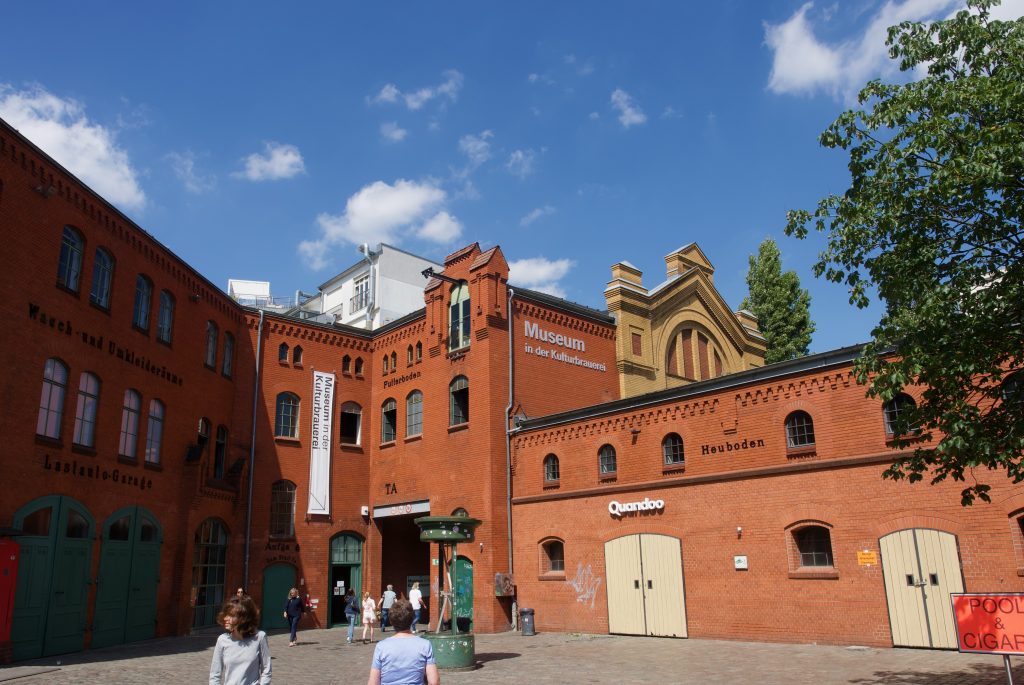
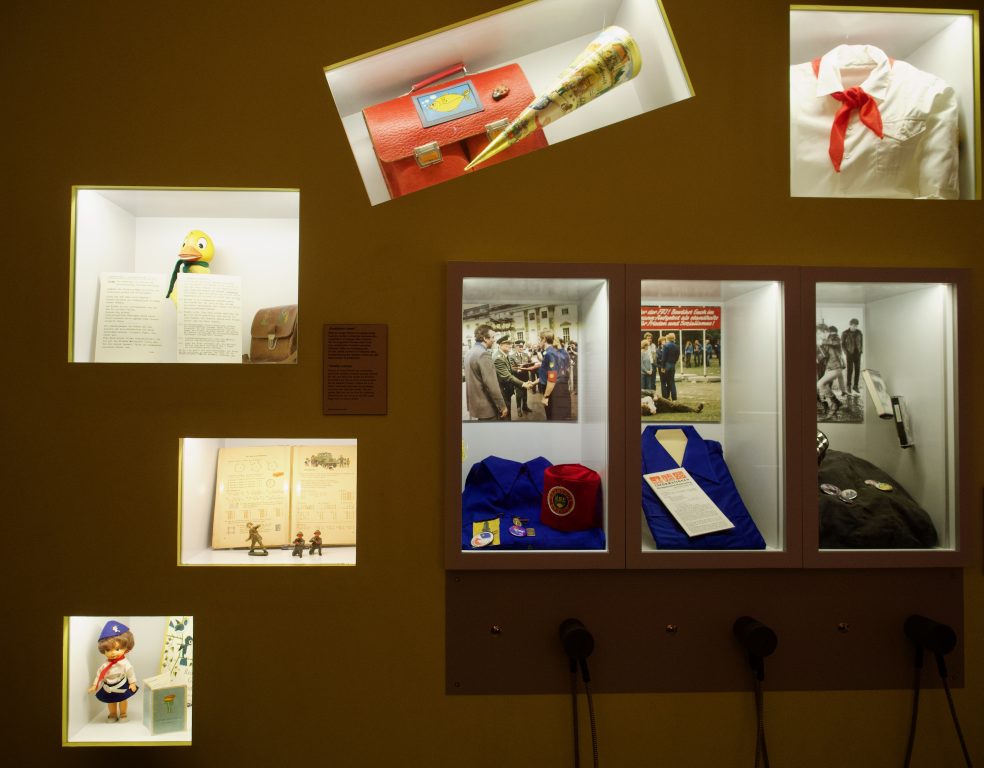
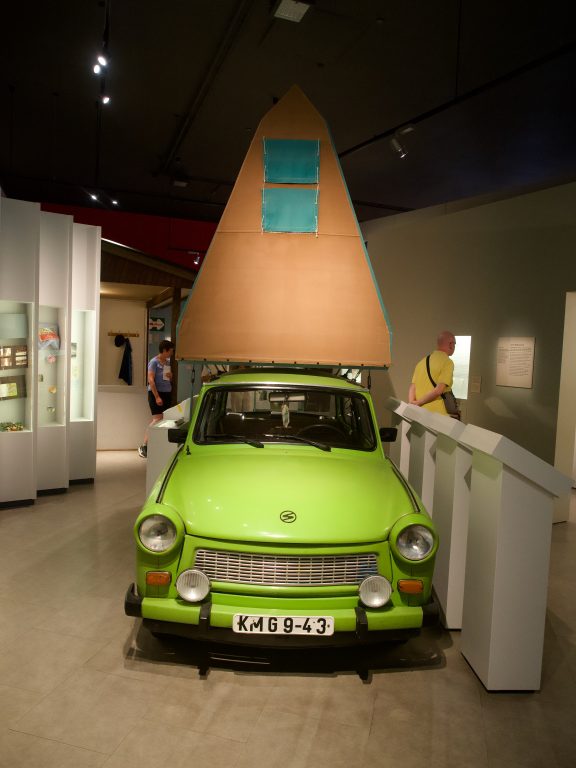
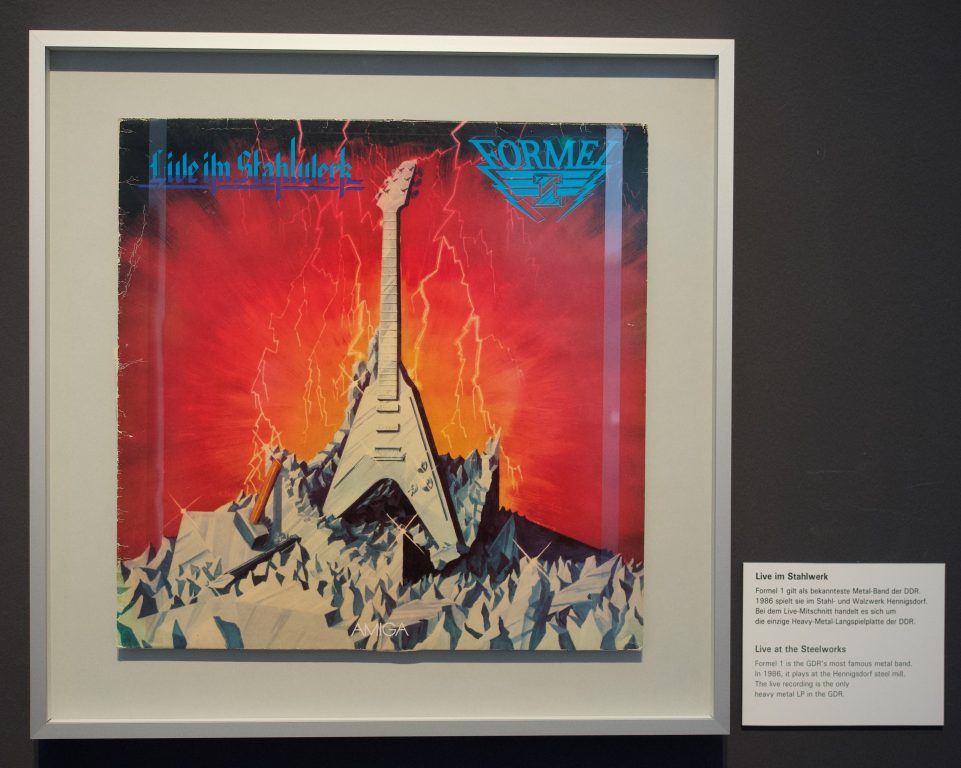
After this stop, we were TRULY tired (it had also gotten very hot–mid-80s feels very warm when it’s also humid) and we headed home. We grabbed a couple of ready-made salads and some cheap gelato from the grocery store and had food right here at the rental, resting our feet and letting the impressions of the day settle for a while.
After a bit of rest and some blogging, we did go back out for a little bit. Hackescher Markt and Hackesche Höfe are not far from here by tram (an 11 minutes’ ride) and that is an area where lots of people mill around on a Saturday evening, at bars, restaurants, movie theaters and just generally to mill around. We wandered through the always-gorgeous Hackesche Höfe, another nearby event space (and former institute for the Blind) and then down to the banks of the river Spree where we had a lemonade and a radler (half beer, half sprite; a nice drink for a hot summer night) and watched people. We walked to the bridge by the Berlin Dome (cathedral) just about sunset, with a couple of buskers playing cello and e-piano right on the bridge (at least they were actually playing, unlike some we’ve heard), and tons of tourists milling around.
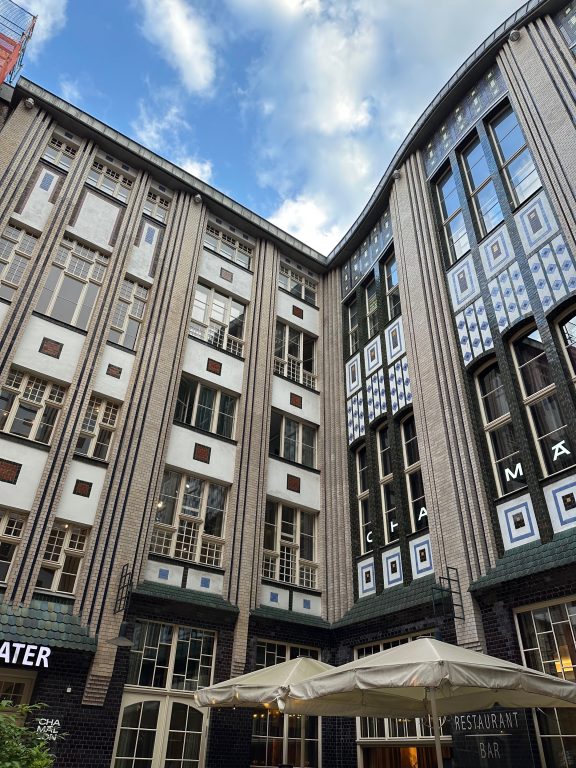
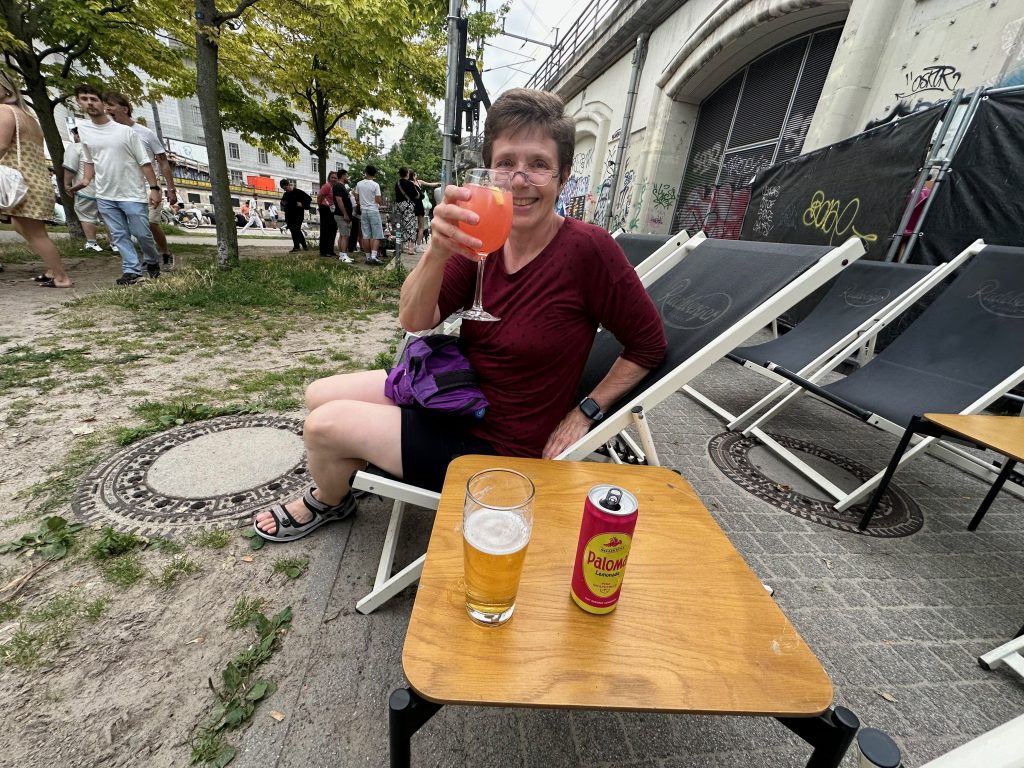
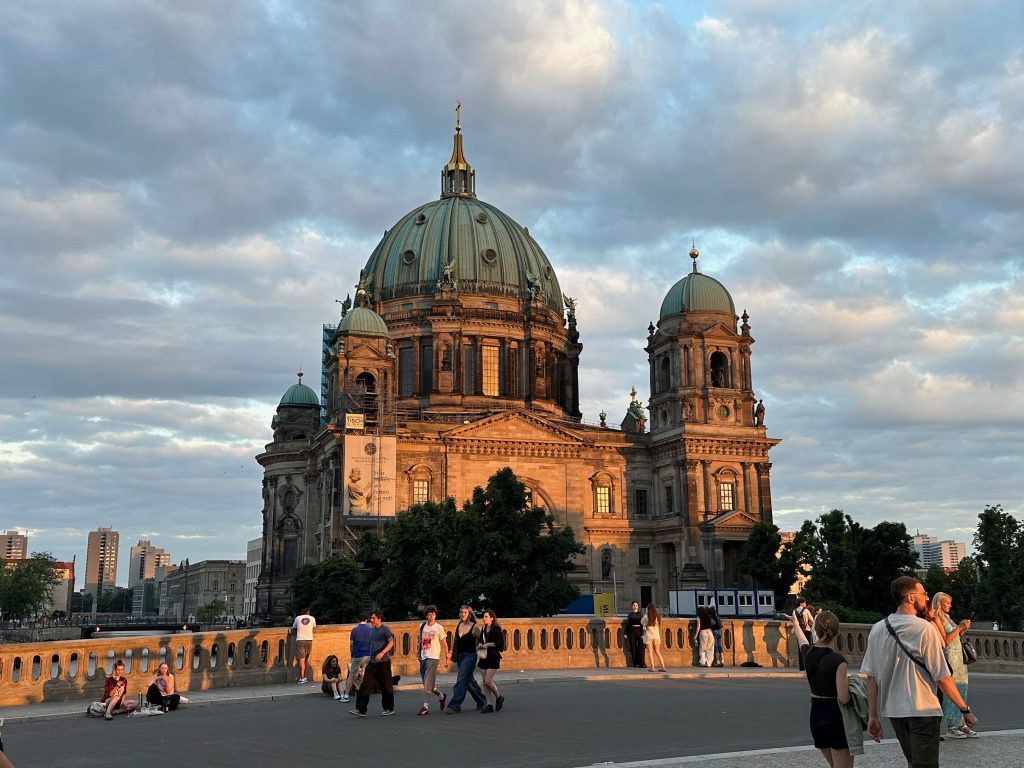
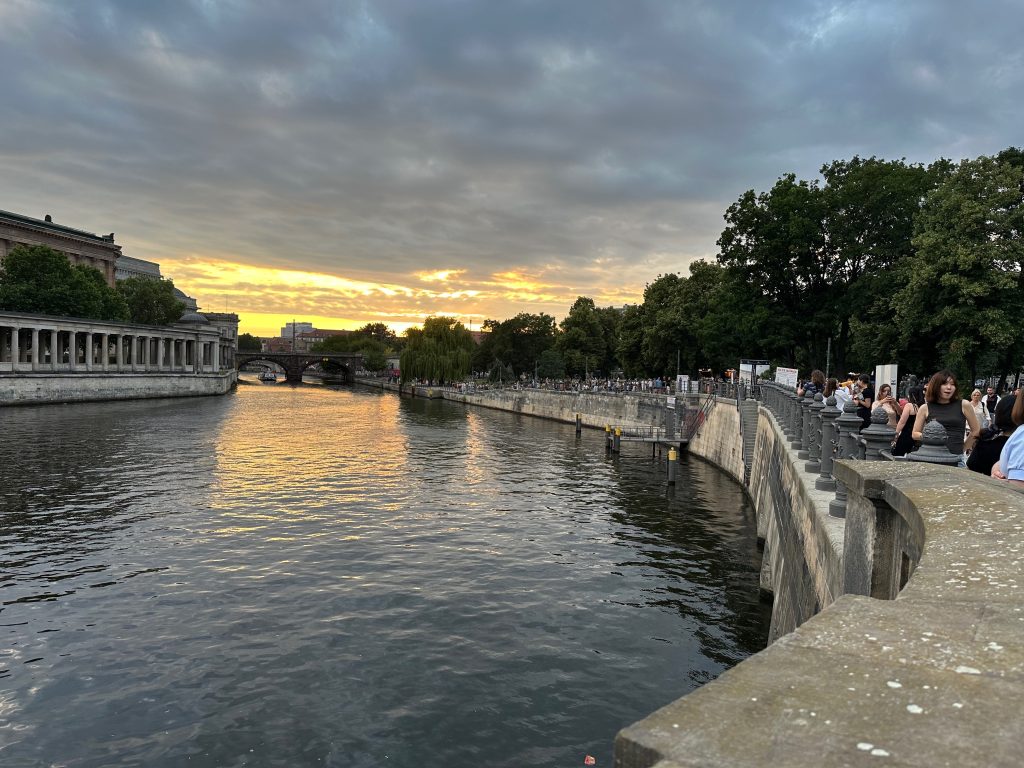
By the time we headed home from Rotes Rathaus (red town hall), we had walked another 2 miles on top of the earlier 10+! Now it’s definitely time for bed.